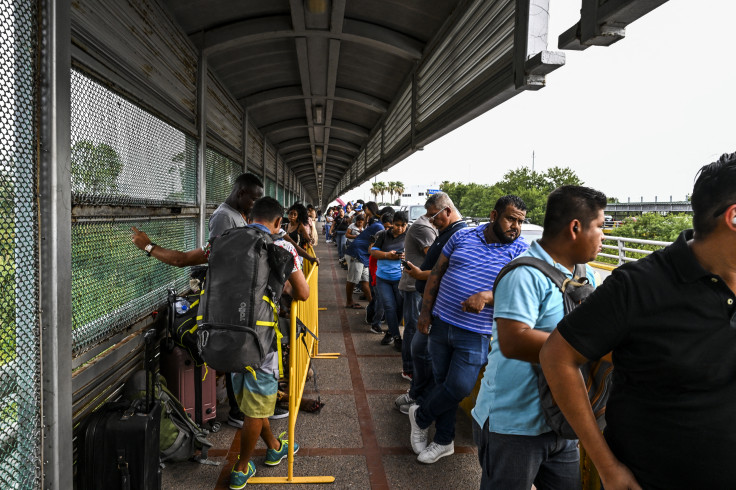
SEATTLE - For years, criminal groups like cartels have made billions of dollars by smuggling large quantities of drugs into the United States. But a recent report suggests that, although drugs continue to be profitable for groups such as the Sinaloa cartel or the Cartel Jalisco Nueva Generación (CJNG), the human-smuggling business has reached new heights in terms of revenue.
With an estimated revenue of $4 billion to $12 billion a year, the smuggling of migrants has joined drugs and extortion as the top income stream for criminal groups in Mexico, Central and South America, as at least 80% of all undocumented immigrants making their way to the U.S. see the need to hire smugglers to help them cross treacherous paths along the way.
A recent investigation by The Washington Post revealed that, although human smuggling has gone on for quite some time, it was not until prosecutors charged a Guatemalan man who led a smuggling network all across Central America that U.S. officials made significant advancements on disrupting the smuggler's enterprise.
According to authorities, Felipe Diego Alonzo had built a crime route stretching from Central America to Texas, allegedly paying off Mexican drug cartels in order to carry out his human-smuggling business.
As a result of the investigation on Alonzo's network, the U.S. Justice Department regarded the prosecution of Alonzo's ring as a breakthrough moment. Twenty other people were convicted, with Alonzo being extradited to Texas in March 2023.
Considered as one of the biggest human-smugglers in Central America, Alonzo pleaded guilty to participation in a migrant-smuggling operation resulting in death and was sentenced to 19 years and seven months in jail, marking the first Guatemalan human smuggling extradition to the U.S. of any kind in nearly five years.
Creation of Joint Task Force Alpha (JTFA)
For years, prosecutors had complained about the lack of tools to break up human-smuggling rings, with analysts arguing that authorities have less hard intelligence on the groups moving migrants through places such as the Darien Gap, in Panama.
But in 2021, Attorney General Merrick B. Garland, in partnership with U.S. Department of Homeland Security (DHS) Secretary Alejandro N. Mayorkas, launched the creation of Joint Task Force Alpha, whose goal is to disrupt and dismantle human smuggling and trafficking networks operating in Mexico and Central America.
Since its creation, JTFA's work has resulted in criminal charges and over 183 domestic and international arrests of leaders, organizers and facilitators of human smuggling activities.
Smuggling industry continues to thrive
Despite the efforts made by the U.S., smuggling rings in Guatemala and Central America continue to be a very profitable business. But human smuggling is not an isolated issue in the U.S.'s southern border, it has also spread to U.S. border with Canada, too.
In the state of Washington, U.S. Customs and Border Protection reported encounters for fiscal year 2024 surpassed the totals from 2023 in the month of May, with more than 2,094 encounters reported.
In June, Axios reported that a Romanian citizen pleaded guilty in a U.S. District Court in Seattle to conspiracy to transport 12 people who were noy legally in the U.S.
In 2023, a California man was sentenced to three years in prison after pleading guilty to smuggling over 800 people into Washington state from Canada, using 17 different Uber accounts, the Department of Justice said.
Peter Andreas, a Brown University political scientist, said both the smuggling of migrants and drug trafficking are driven by a complex supply-and-demand factors.
"You can't put migrant-smugglers out of business," said Andreas. "But you can put the worst offenders out of business."
Last year, a report by InSight Crime said DHS in recent years estimates that criminal organizations earned at least $500 million annually from migrant smuggling, but based on migrants' experiences that number could be an underestimate.
Parker Asmann, a reporter for InSight Crime, says during his team's two-year investigation in Mexican border states, they found that factions of the Sinaloa cartel collected at least $100 per migrant in the town of Altar.
"Assuming that as many as 30,000 migrants pass through Altar in a single month, which is what the local priest estimated, that's $3 million just from that quota, just in Altar, just in one month," he said. "So that gives you an idea of just how much money there is to be made," Asmann said.
The report also found that migrants paid at least $10,000 to be transported from Central America or Mexico to a U.S. city.
© 2025 Latin Times. All rights reserved. Do not reproduce without permission.







